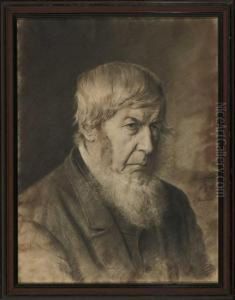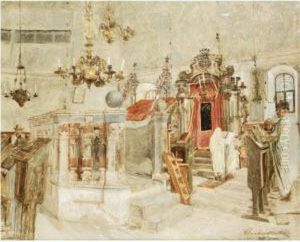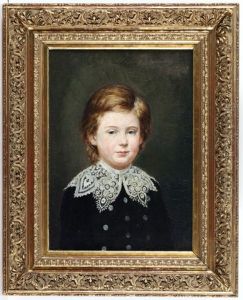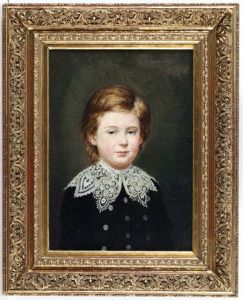Alexander Sochaczewski Paintings
Alexander Sochaczewski was a Polish painter born on November 10, 1843, in Włodzimierz Wołyński, at that time part of the Russian Empire, now in Ukraine. He is often remembered for his poignant work that depicted the experiences of Polish exiles in Siberia. His artistic journey and the themes of his work were significantly influenced by the historical and political context of his time, particularly the Polish January Uprising against the Russian Empire.
Sochaczewski participated in the January Uprising of 1863, which was a Polish insurrection aiming to regain independence from Russian rule. After the insurrection's failure, he was among the many Poles who were arrested and exiled to Siberia as punishment for their involvement. This personal experience of exile deeply impacted his artistic vision, leading him to create works that reflected the struggles and the emotional toll of the Siberian exiles. His time in Siberia lasted for about a decade, and during this period, he was able to capture the landscapes and the harsh realities faced by the exiles through his art.
After being granted amnesty, Sochaczewski returned to Poland and continued to work as an artist. He lived in Kraków and later in Warsaw, where he became known for his historical paintings. His most famous work is 'Siberian Exiles' (Polish: 'Sybiracy'), which depicts a group of Polish prisoners in a Siberian camp. The painting serves as a historical document, providing valuable insight into the conditions and experiences of the Polish deportees.
Alexander Sochaczewski's contributions to Polish art are significant, as his works not only reflect the technical skills of a painter but also serve as a narrative of Polish history and resilience. His paintings are a testament to the national spirit and the collective memory of the hardships endured by Poles during the partitions of Poland.
Sochaczewski's life and career were marked by the intersections of art and activism, as his experiences and the broader political struggles of his countrymen deeply influenced his artistic output. He died on August 31, 1923, in Warsaw, leaving behind a legacy that continues to be appreciated by art historians and enthusiasts of Polish history and culture.



